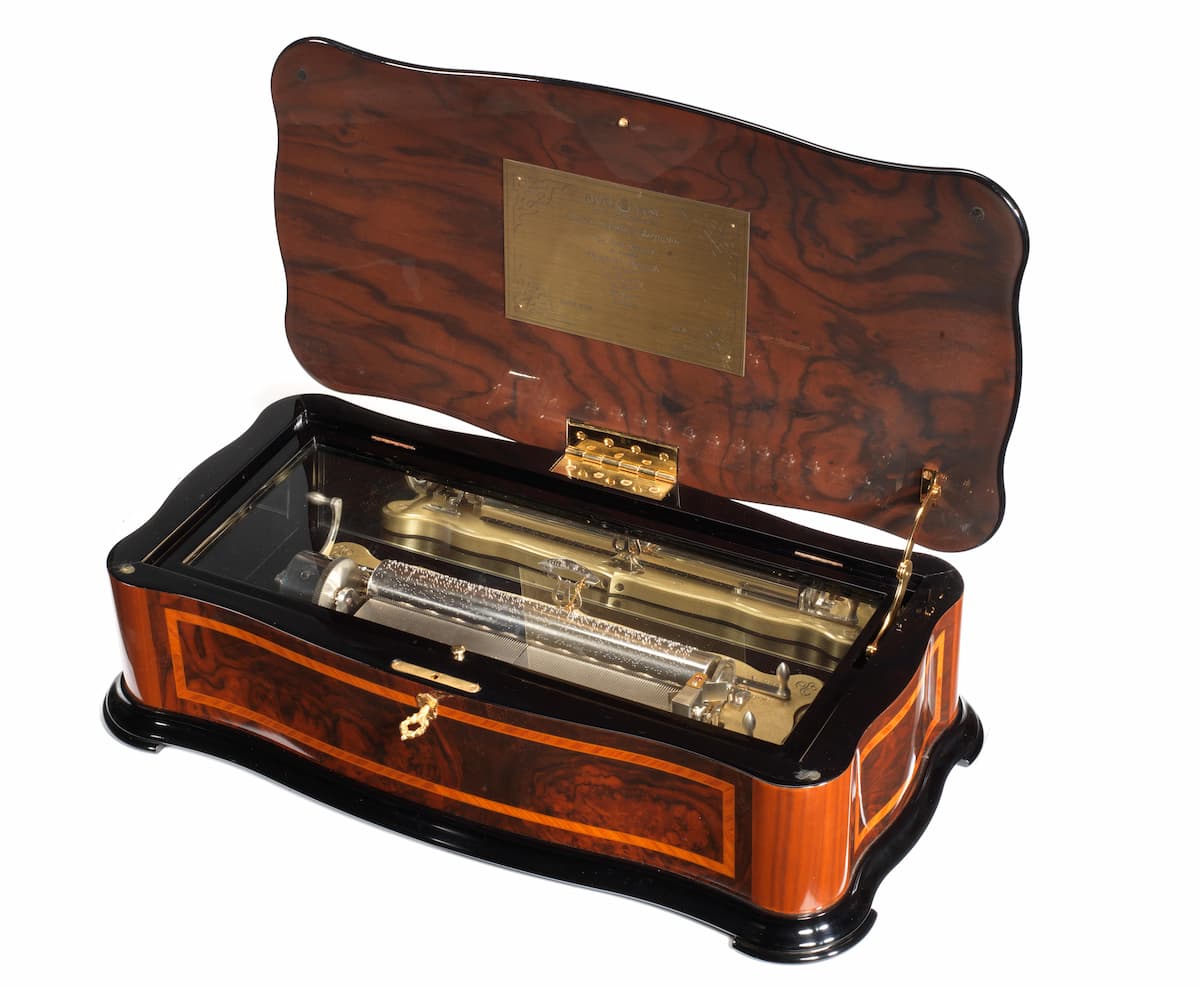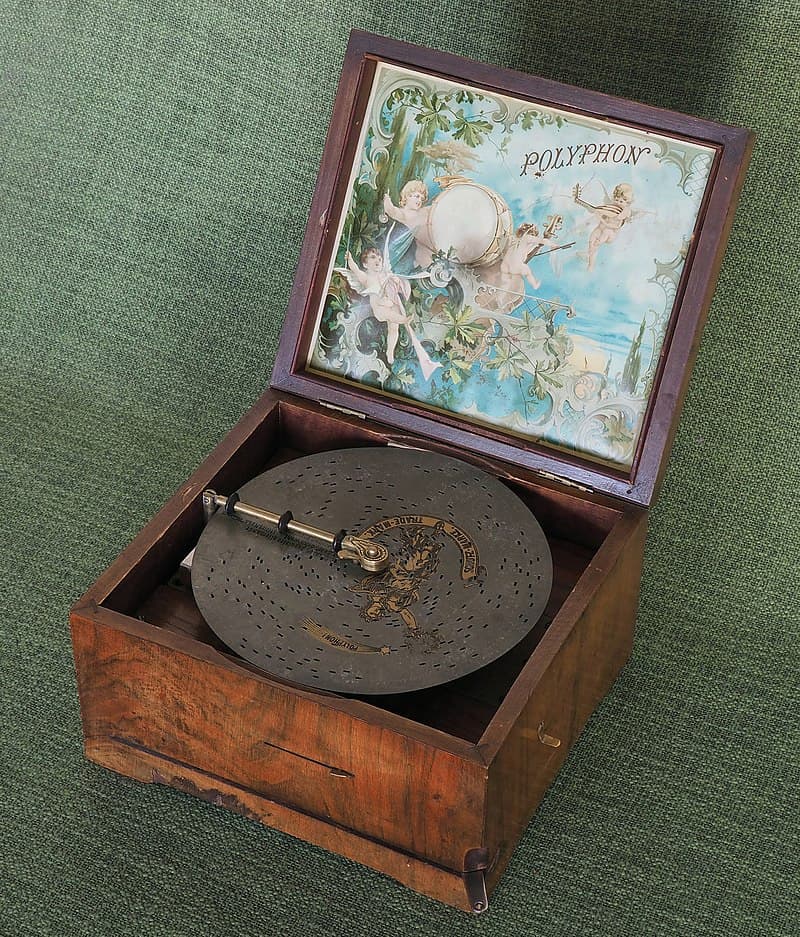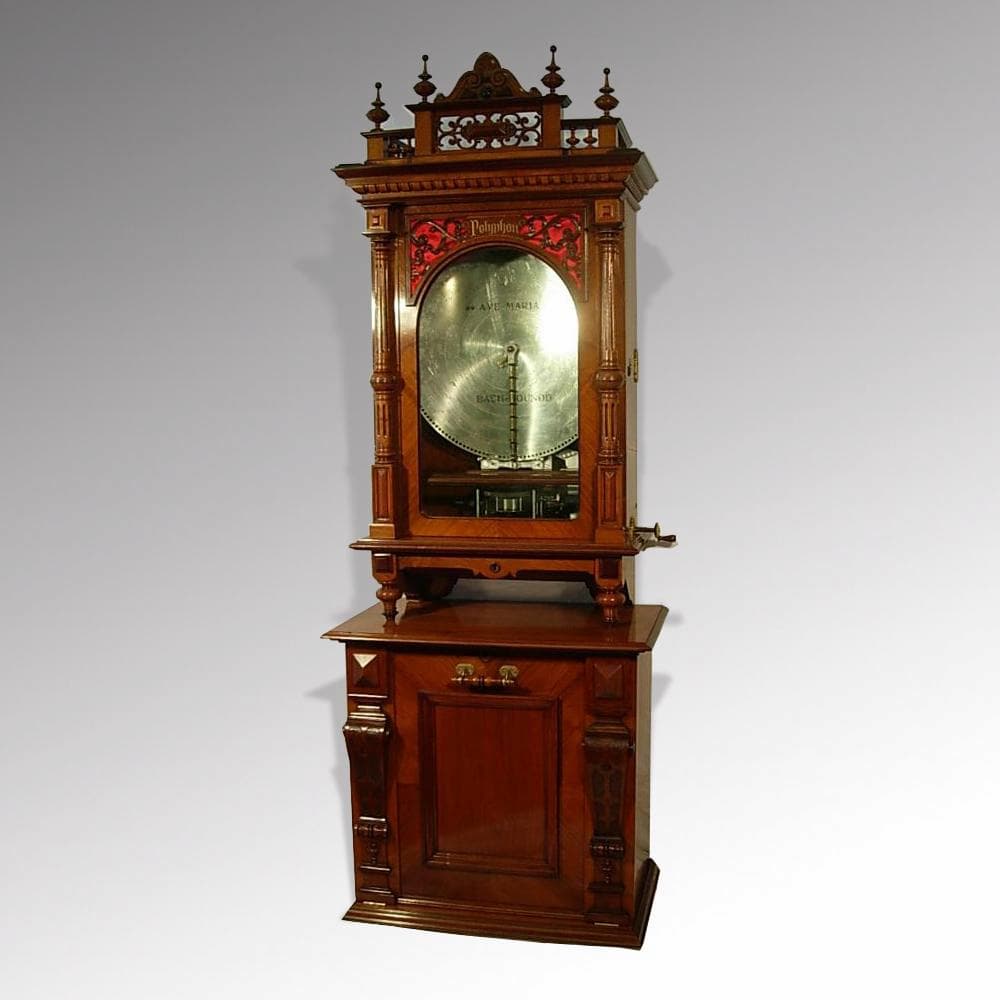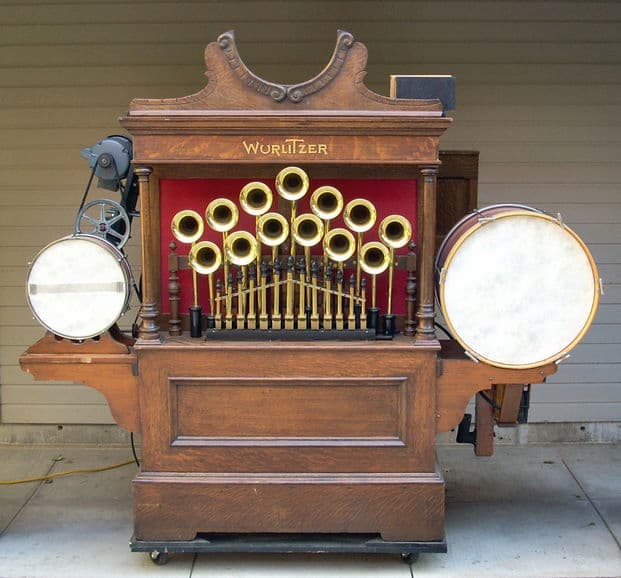Enclosed in a wooden box lies a magical mechanism: things whirl, a pinned cylinder turns, a little tuned comb is plucked, and music comes out.
We looked earlier at all the different ways composers played with Johann Strauss II’s Blue Danube Waltz. We found a number of different mechanical music players that used The Blue Danube for their melodies.
We’ll start with the musical box. Here, the music is played on a Grand Cartel-type Sublime Harmonie instrument. The Sublime Harmonie mechanism was patented in 1874 and made the music box seem more ‘real’.
The inventor, Charles Paillard, described it as combining a rotary musical cylinder with ‘two or more combs with notes tuned in an identical or nearly identical manner’. By making a difference in the combs’ tuning, the slight dissonance resulted in a ‘more powerful and harmonious sound’. By adding more combs with slightly adjusted tuning, the sound will be louder. But, if he wants to produce ‘the different shades of musical expression, such as piano, crescendo, forte, decrescendo, etc., I must play one or more combs simultaneously, depending on the effect I want to produce’.
This micro-tuning of the sound improved, with changes made to the shape of the comb, separation of the combs’ teeth so that the sounds don’t interfere with each other, etc.
Anonymous: Grand Cartel type Sublime Harmonie – Le beau Danube bleu (after J. Strauss II’s An der schönen, blauen Donau, Op. 314) (music box)

Grand cartel type Sublime Harmonie music box, 2000 (Reuge)
The problem with the musical box was its size. Most people wanted them to be placed on tables, so the cylinder was limited in size.
One alternative was to use a flat circular plate pierced with holes, as in this table-top-sized polyphon.

Music box by Polyphon-Musikwerke, ca. 1905 (Leipzig, Germany)
The punched-out piece of metal was folded to the underside of the disc and operated like a music box cylinder, engaging with a ratchet-like wheel that then plucked a tooth on the instrument’s comb. It was the same proof as the music box described above, but the mechanism was more hidden.
To operate, the listener wound up a clockwork motor that turned the disc. In the example above, the disc is held in place with a pressure bar.
In this recording, The Blue Danube is played on three different size Polyphon instruments. The first uses a 24.5-inch disc, the second a smaller 15.5-inch disc, and the last a 22-inch disc with a glockenspiel attachment.
The 24.5-inch recording is the richest of the three, but the addition of the metallic glockenspiel on the third recording creates a sparkling interest.
These instruments were no longer able to fit on a tabletop. Extra discs could be stored in the bottom cabinet.

Polyphon with 24.5 inch disc, 1890
Johann Strauss II: An der schönen, blauen Donau (The Beautiful Blue Danube), Op. 314
To get a really complex sound, it was necessary to add more instruments. In this three-disc Symphonion, more voices could be accommodated.

Three-Disc Symphonion, ca. 1880
Anonymous: Johann Strauss II: Paradise Alley – An der schönen, blauen Donau (The Beautiful Blue Danube), Op. 314 – O Promise Me (arr. for musical box)
Like a player piano, which operates with a piano roll that has been pierced with holes, the band organ also operates with a paper music roll. Rather than producing sound with a metal comb, these used organ pipes. Air would blow through the holes on the paper music roll and supply air to the pipes. In addition to the pipes, other instruments would play – trumpets, trombones, flutes, string instruments such as violin or cello, and percussion instruments. These were used for carousels, outdoor music, and for roller rinks.

Wurlitzer 125 Band Organ
Johann Strauss II: An der schönen, blauen Donau (The Beautiful Blue Danube), Op. 314 (arr. for band organ) (Jacques Bourgade, band organ)
It’s all The Blue Danube but with such different sounds!
For more of the best in classical music, sign up for our E-Newsletter



